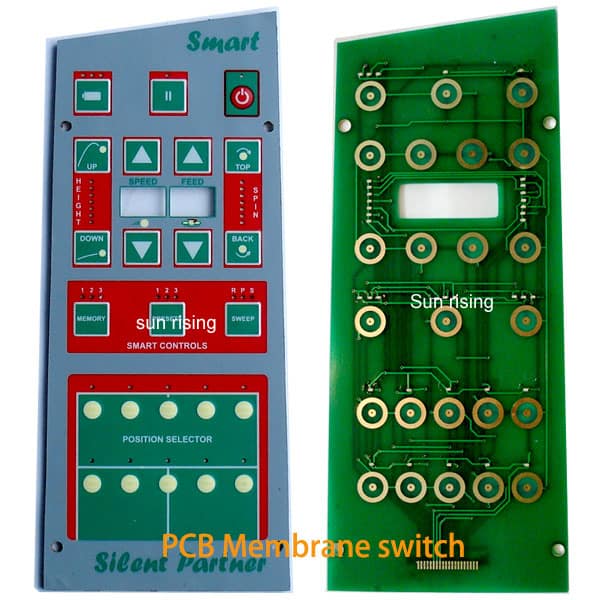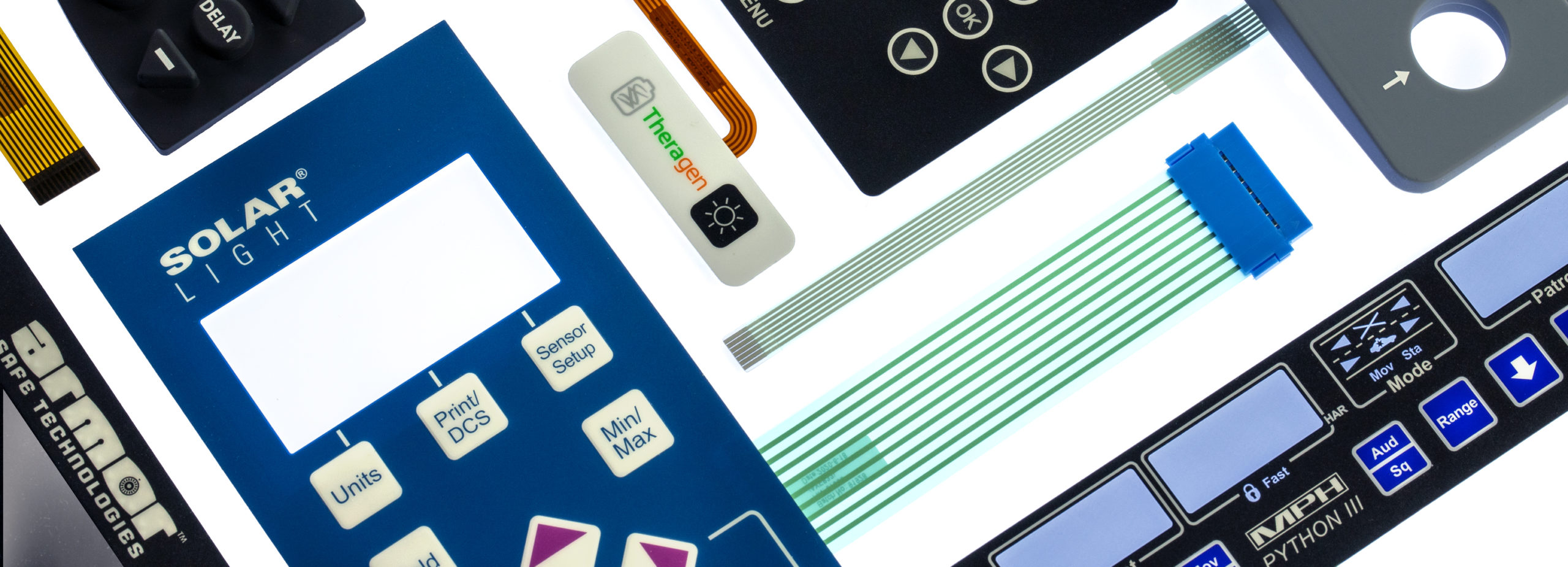Membrane Change Modern Technology: The Trick to Trusted and Cost-efficient User Interfaces
Membrane layer button technology has emerged as a crucial component in the layout of individual interfaces, supplying both dependability and cost-effectiveness throughout a varied variety of applications. Its robust building and construction ensures resistance to environmental difficulties, while the adaptability in style permits tailored options that satisfy certain market requirements. As we discover the diverse advantages of membrane layer buttons, their capacity for advancement questions about future applications and progressing patterns. What does the next chapter hold for this technology in a significantly digital landscape?
Comprehending Membrane Layer Switch Modern Technology
Membrane button technology is an extensively used interface option in various digital tools, using a smooth blend of capability and design. This modern technology incorporates numerous layers of materials, usually consisting of a visuals overlay, spacer layer, and a circuit layer. The graphic overlay shows the user interface aspects, while the spacer layer separates the circuit layer from the overlay up until a user triggers a button.
When pressure is put on the overlay, the circuit layer completes the electric circuit, sending out a signal to the gadget. This system enables various arrangements, including tactile responses and backlighting options, enhancing individual communication. Membrane switches are generally produced making use of resilient products such as polyester or polycarbonate, ensuring durability and resistance to environmental elements like wetness and dirt.
The convenience of membrane layer switches enables their application in varied industries, including clinical devices, consumer electronics, and commercial controls. Their small layout enables assimilation right into space-constrained environments, providing an efficient individual interface without endangering visual allure. Understanding the complexities of membrane switch technology is crucial for manufacturers and designers seeking to create trustworthy and reliable human-machine user interfaces.
Key Benefits of Membrane Buttons
While numerous interface solutions exist, membrane layer changes deal unique advantages that make them a favored choice in numerous applications. Among the primary benefits is their resilience; membrane buttons are made to hold up against harsh ecological problems, including moisture, dust, and temperature level changes, making certain durable efficiency. This durability substantially decreases the need for constant replacements, thus reducing general maintenance prices.

Moreover, membrane layer buttons are lightweight and compact, making them appropriate for applications where space is limited. Their low-profile layout adds to a sleek appearance without jeopardizing capability.
Cost-effectiveness is additionally a significant advantage, as the manufacturing process for membrane layer changes often tends to be cheaper compared to traditional mechanical switches. This price, combined with their integrity and ease of installation, positions membrane switches over as a practical remedy for a wide variety of markets looking for reliable and reliable interface.
Applications Throughout Numerous Industries
How do membrane switches adapt to the diverse demands of numerous sectors? Membrane layer switch innovation is increasingly recognized for its convenience, making it ideal for a vast array of applications across multiple markets. Discover More Here In the clinical area, membrane buttons are used in diagnostic tools and person tracking gadgets, where their toughness and simplicity of cleaning are crucial for keeping health requirements. The vehicle sector uses these buttons in control panels and control board, offering a structured aesthetic while making certain user-friendly procedure.
In customer electronics, membrane buttons offer a small service for remote controls and home devices, enhancing user experience via intuitive style. Furthermore, the industrial industry leverages membrane buttons for machinery control panels, taking advantage of their resistance to harsh settings, such as moisture and dust.
Armed forces and aerospace applications additionally use membrane layer buttons for their dependability and capacity to endure severe problems, guaranteeing functional efficiency in critical circumstances. The food and drink industry embraces these switches for automated systems, where sanitation and convenience of procedure are paramount (membrane switch). Ultimately, membrane switches are customized to satisfy the special needs of each sector, proving their vital duty go to my site in modern-day technology interfaces
Style and Personalization Alternatives

In the world of membrane layer button modern technology, layout and modification choices play a pivotal duty in enhancing capability and user communication. These buttons can be customized to satisfy certain operational requirements and visual preferences, making them versatile parts in numerous applications.
Among the main personalization choices is the format of the switch itself, which can be developed to accommodate unique user interfaces and ergonomic factors to consider. By readjusting the shape, dimension, and setup of buttons, producers can create instinctive read the article styles that help with convenience of use. Furthermore, the incorporation of various colors and visuals overlays permits branding and enhanced presence, ensuring that customers can rapidly identify features.
In addition, membrane buttons can be engineered with various responsive feedback devices, such as raised switches or audible clicks, to boost the individual experience. Different products can likewise be picked for durability and ecological resistance, addressing aspects such as moisture, temperature level fluctuations, and chemical direct exposure.
Ultimately, the substantial design and personalization options readily available in membrane button technology equip businesses to produce customized services that not only meet functional needs but additionally line up with their branding and functional needs.

Future Patterns in Membrane Layer Switches
As membrane switch modern technology continues to develop, future patterns are significantly concentrated on enhancing individual experience and incorporating innovative performances. One substantial fad is the integration of touch-sensitive and capacitive innovations into standard membrane layer buttons. This advancement enables for even more user-friendly interface, giving responsive responses while keeping a streamlined design.
Another emerging trend is the use of environmentally friendly materials, driven by the expanding need for lasting production methods. Suppliers are seeking to minimize their carbon footprint by making use of recyclable substrates and low-impact inks, aligning with international sustainability objectives.
In addition, the surge of the Net of Points (IoT) is triggering the consolidation of wise features into membrane layer buttons. Improved connectivity options will allow devices to communicate with each various other, permitting smooth combination into broader systems.
Additionally, advancements in printing modern technologies, such as electronic printing, are enabling for greater layout adaptability and personalization. This makes it possible for suppliers to create intricate layouts and vivid colors cost-effectively.

Verdict
Finally, membrane button innovation represents an essential advancement in user interface layout, using significant benefits in sturdiness, customization, and cost-effectiveness. Its prevalent applicability across varied industries emphasizes its value in modern innovation. As advancements proceed to emerge, specifically in touch-sensitive interfaces and lasting materials, the capacity for membrane changes to boost user experience and capability remains appealing. Proceeded exploration of this modern technology will likely yield additionally renovations and broaden its range in future applications.